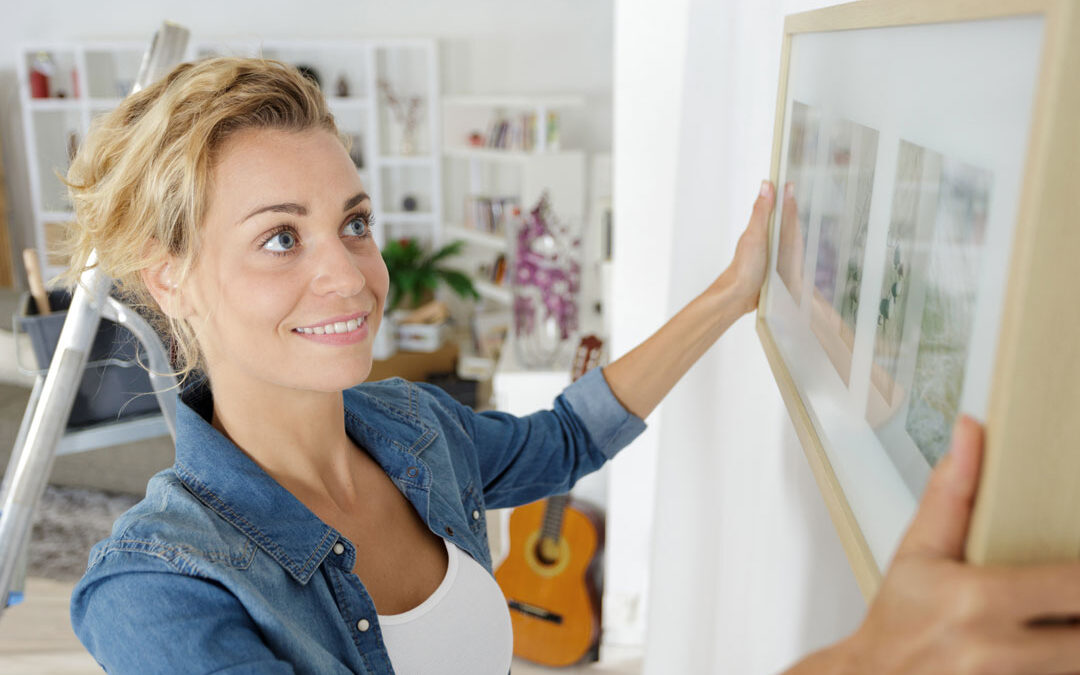- Not too high! Think in terms of eye level, so that the eye of the average viewer falls about one-third of the way down from the top of the picture. This will be about 55 to 58” from the floor.
- Be sure to use hangers that are strong enough to hold the weight of the picture. Two hangers are better than one for large pieces—the weight will be distributed and the picture will be less likely to shift.
- When hanging a pair or trio of pictures, group them together so they relate to one another instead of appearing to float in a large space on the wall.
- When hanging a picture wall, create alignments, so the viewer’s eye has lines to follow. These visual lines may be horizontal or vertical. If a picture wall contains many pictures, there may be several of these alignments. Any two frames should have a common line, horizontally or vertically.
- Two ways to “audition” a picture wall:
a) arrange and rearrange the pictures on a floor until satisfied with the layout before hanging on the wall.b)make templates by tracing around each frame on a piece of newspaper, cut out and hang the newspaper samples (taped to the wall with small pieces of removable tape) until satisfied with the arrangement.
- Use two hooks to hang the picture instead of one. Two hooks will keep the picture from tilting forward and shifting from side to side.
- Avoid hanging valuable art in direct sunlight: excess light can damage many types of artwork. Use framing glass that filters Ultraviolet rays to significantly reduce harm from light exposure.
561-845-8068
[email protected]


Recent Comments